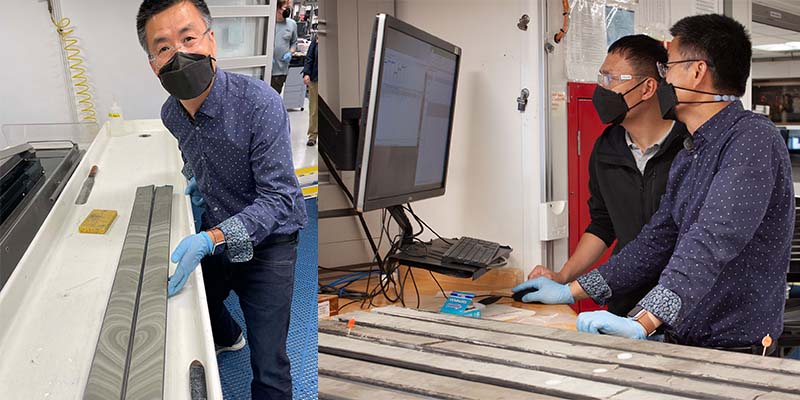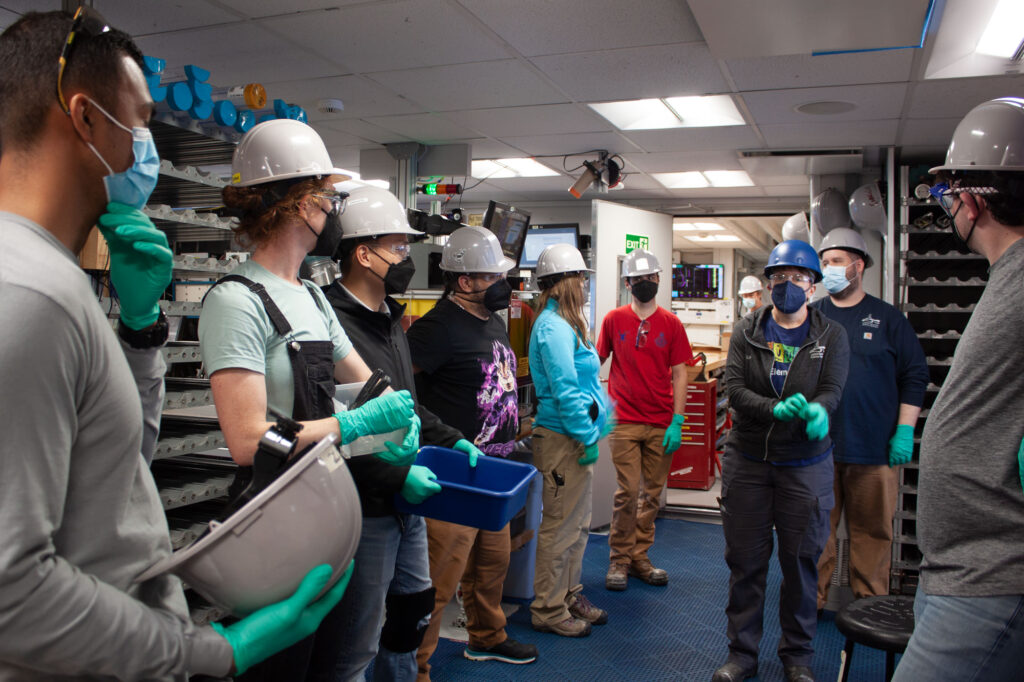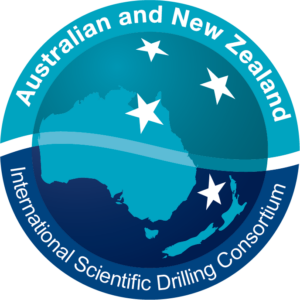Deep sea sediments hold the secrets of Earth’s past changing climate and help scientists understand what the future may hold. Because they trap ancient air, ice cores from polar regions have become the benchmark in measuring past changes in atmospheric greenhouse gas contents. But what we can learn from them is limited, with the oldest ice cores currently cataloguing only the last one million years or so.
That’s all about to change thanks to International Ocean Discovery Program (IODP) Expedition 397: Iberian Margin Paleoclimate, which will extend previous sub-seafloor drilling records from the region to enable resolution of climate events on timescales of up to six million years.
“Currently drilled fast-accumulation sediments from the Iberian Margin only date back around 1.45 million years, so we don’t have the high-resolution data to reconstruct detailed past climate changes over a longer period of time,” explains Professor Jimin Yu, who joins the expedition’s sedimentology team via the Australian & New Zealand IODP Consortium (ANZIC).
When in the Australian National University Research School of Earth Sciences, Professor Yu’s career to date has been focused on using sediments to reconstruct paleoclimate, and he brings deeply relevant expertise to aid the Iberian expedition’s scientific objectives.
“I use microfossil shells called foraminiferal tests, and measure the chemical composition of foraminifera based on proxies such as magnesium to calcium ratio, boron to calcium ratio, and boron isotopes,” Professor Yu says.
“From these we can reconstruct sea water chemistry and conditions such as temperature, pH and pCO2 – all important variables in understanding past climate. By reconstructing ocean acidity in the past, we can better understand variations in the carbon cycle and the ocean’s effects on atmospheric CO2 and climate through time. Advancing our paleoclimate knowledge is thus crucial to better understanding past, current, and future carbon cycle.”

The Iberian Margin, off the coast of Portugal, is uniquely positioned to unlock detailed histories of past carbon cycles. Sediments are deposited at nearly ten times the rate of other deep-sea locations, so climate changes can be detected with much greater time resolution. An Iberian Margin sediment archive also contains signals of marine, atmospheric, and terrestrial changes in a single core, enabling investigation of the relative timing of various changes within the ocean-climate system to reconstruct high-resolution climate signals over millennia.
The Iberian Margin holds the secret to high-resolution climate change data, and this fresh drilling is already revealing surprises; one of the first cores to come up on Expedition 397 – the now Twitter-famous ‘heart core’, pictured here with Professor Yu – revealed incredibly rare soft sediment deformation and complex stratigraphy.
Professor Yu has worked extensively with Iberian Margin sediments, including in his recent Australian Research Council Discovery Project ‘Deep Atlantic’s role in millennial atmospheric carbon dioxide changes’.The research aims to substantially improve our understanding of the mechanisms governing the global carbon cycle by generating the first high-resolution deep Atlantic carbon ion and nutrient records over the last 150,000 years. The expedition comes at the perfect time.
“The Discovery Project supports us to work on sediments from the Iberian Margin from the last glacial and interglacial cycle. We already have gained great data from cores and our results are currently under review. With continued funding, my students and I will be able to put the sediments from Expedition 397 to use for further breakthroughs,” shares Professor Yu.
Expedition 397 sailed from Lisbon, Portugal on JOIDES Resolution on 13 October. From now until 11 December, crews will collect cores from four primary drill sites across a varied water depth transect of up to 4.7 kilometres, including going deeper into U1385 (Expedition 339). The sediment samples within are expected to extend our geologic history by three to six million years, dramatically enhancing our capability to project future climate change.
Professor Yu says what the team hopes to find will prove a valuable relevance for the Southern Ocean.
“The Southern Ocean is a critical region for climate change and the carbon cycle, including atmospheric CO2variations, but at high latitudes – such as the Antarctic Zone – it can be very difficult to find foraminifera shells,” Professor Yu explains.
“We work around this by looking at physical and chemical condition changes in downstream sites and use combined proxies to infer what happened in the Southern Ocean. So Iberian Margin sediments are invaluable in helping us understand Southern Ocean processes and their role in controlling past carbon cycle and climate change over a longer timescale.”

Expedition 397 is Professor Yu’s maiden IODP expedition, and he is excited at the prospect of this extraordinary learning experience.
“The JOIDES Resolution is like a floating university. I will be one of eight scientists in the sedimentology team and one of 26 international scientists on board, and I am looking forward to collaborating with them during the expedition. I am also hoping to generate further collaborations after the expedition ends,” he adds.
As the current phase of the scientific ocean drilling program nears its conclusion, and the future of JOIDES Resolution remains unclear, Professor Yu is hopeful that this vital international collaboration can continue, enabling future generations of scientists to experience the career-changing opportunities it offers.
“As a scientist, I think it is very important to have a continued scientific drilling project and to retain an international effort to push science forward and collaborate in a synergistic way to make better science for all of us.”
Follow Professor Yu and the Expedition 397 crew as they break new ground at sea! Head to Twitter and follow ANZIC (@anzic_iodp) and JOIDES Resolution (@TheJR) for the latest news and discoveries as the cores come up.
